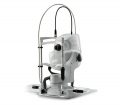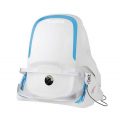-
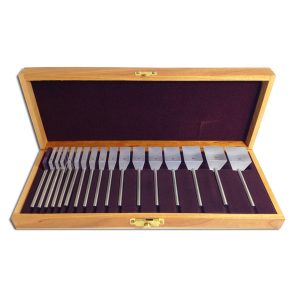 Stainless steel handles and a red filter on a stick are held in a felt lined case for convenience as well as scratch protection. Item #: ASPSSET+
Stainless steel handles and a red filter on a stick are held in a felt lined case for convenience as well as scratch protection. Item #: ASPSSET+ -
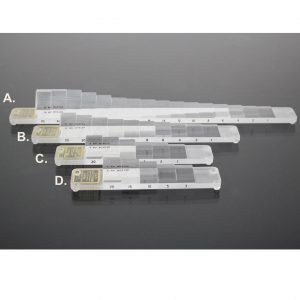
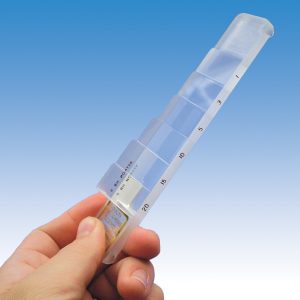 A.) "COMPLETE BAR" Includes prisms: 1, 2, 4, 6, 8, 10, 12, 14, 16, 18, 20, 25, 30, 35, 40 & 45 B.) "EXTENDED BAR" Includes prisms: 1, 2, 4, 6, 8, 10, 12, 15, 20 and 25. C.) "BETTER BAR" Includes prisms: 1, 3, 5, 10, 15 & 20. D.) "GOOD BAR" Includes prisms: 3, 5, 10, 15 & 20. Item #: AHB+
A.) "COMPLETE BAR" Includes prisms: 1, 2, 4, 6, 8, 10, 12, 14, 16, 18, 20, 25, 30, 35, 40 & 45 B.) "EXTENDED BAR" Includes prisms: 1, 2, 4, 6, 8, 10, 12, 15, 20 and 25. C.) "BETTER BAR" Includes prisms: 1, 3, 5, 10, 15 & 20. D.) "GOOD BAR" Includes prisms: 3, 5, 10, 15 & 20. Item #: AHB+ -
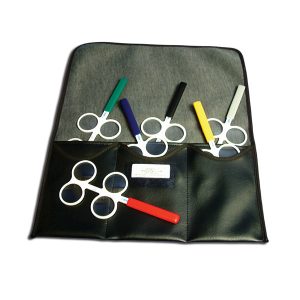 Six-piece set includes: 2D,3D,4D,5D,6D and 8D flippers. Professional training with two prism pairs. Beginning with the highest powers through which a patient can fuse and focus, prism flippers are exchanged for next higher powers through the training sequence. GREAT FOR BEGINNING PRESBYOPES WHO HAVE EXO WITH THEIR BIFOCALS! All flippers have corrected curve lenses and come in a deluxe black carrying case. Save money with this kit! Note: Prism diopter powers are listed per lens. For example, a 4PD flipper will have two 4PD lenses to make a 8PD range. So, 4PD flipper = 8PD range. Item #: BC1275SETCC
Six-piece set includes: 2D,3D,4D,5D,6D and 8D flippers. Professional training with two prism pairs. Beginning with the highest powers through which a patient can fuse and focus, prism flippers are exchanged for next higher powers through the training sequence. GREAT FOR BEGINNING PRESBYOPES WHO HAVE EXO WITH THEIR BIFOCALS! All flippers have corrected curve lenses and come in a deluxe black carrying case. Save money with this kit! Note: Prism diopter powers are listed per lens. For example, a 4PD flipper will have two 4PD lenses to make a 8PD range. So, 4PD flipper = 8PD range. Item #: BC1275SETCC -
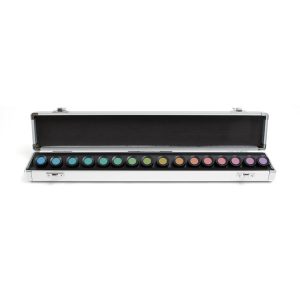 Farnsworth Test for Congenital and Acquired color defects. The Farnsworth D-15 contains a reference disc holding notation 10 B 5 4 and fifteen numbered discs which make up an incomplete color circle. The patient arranges the discs and then evaluation of the patients arrangement separates 'normal' color perception from moderate and strong defects in deutan, protan or tritan axis color discrimination. The disks are spread out on a table and arranged by the patient. The Farnsworth D-15 test is a subset of the well known Farnsworth 100 Hue Test. It is intended for classification instead of in-depth study of color vision defects. The D-15 and 100 hue tests are correlated. Growing Importance of Color deficiency Screening: In addition to congenital color deficiency screening there is growing evidence that adult acquired color deficiency, especially in yellow and blue perception, can indicate medical toxicity and other problems. Increasingly complex security and medical systems also require verification of all three types of color receptors. How the D-15 test works: The Farnsworth D15 is called 'dichotomous' because it is designed to separate subjects into one of two groups, 1) Strongly color deficient or 2) Mildly color deficient or color normal. This is accomplished by the arrangement of vivid (saturated) colored discs. A perfect score shows normal color perception. A non-perfect score is used to determine a medium or strong color deficiency.
Farnsworth Test for Congenital and Acquired color defects. The Farnsworth D-15 contains a reference disc holding notation 10 B 5 4 and fifteen numbered discs which make up an incomplete color circle. The patient arranges the discs and then evaluation of the patients arrangement separates 'normal' color perception from moderate and strong defects in deutan, protan or tritan axis color discrimination. The disks are spread out on a table and arranged by the patient. The Farnsworth D-15 test is a subset of the well known Farnsworth 100 Hue Test. It is intended for classification instead of in-depth study of color vision defects. The D-15 and 100 hue tests are correlated. Growing Importance of Color deficiency Screening: In addition to congenital color deficiency screening there is growing evidence that adult acquired color deficiency, especially in yellow and blue perception, can indicate medical toxicity and other problems. Increasingly complex security and medical systems also require verification of all three types of color receptors. How the D-15 test works: The Farnsworth D15 is called 'dichotomous' because it is designed to separate subjects into one of two groups, 1) Strongly color deficient or 2) Mildly color deficient or color normal. This is accomplished by the arrangement of vivid (saturated) colored discs. A perfect score shows normal color perception. A non-perfect score is used to determine a medium or strong color deficiency. -
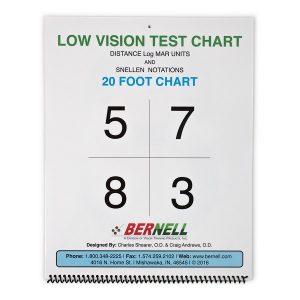 Designed by two low vision doctors. This chart has a 20/630 size number as well as numbers & tumbling "E's" that are 20/500, 20/400, & 20/317 sizes. These take the memory out of acuity testing. The 20/250 page & below have four numbers of the same size. This allows you to test each eye individually without concern for memoriztion. Also, by observing which number is seen first, the tester can decide which part of the field has the best fixation. Chart lists size by logmar & Snellen equivalent to 20/20.
Designed by two low vision doctors. This chart has a 20/630 size number as well as numbers & tumbling "E's" that are 20/500, 20/400, & 20/317 sizes. These take the memory out of acuity testing. The 20/250 page & below have four numbers of the same size. This allows you to test each eye individually without concern for memoriztion. Also, by observing which number is seen first, the tester can decide which part of the field has the best fixation. Chart lists size by logmar & Snellen equivalent to 20/20. -
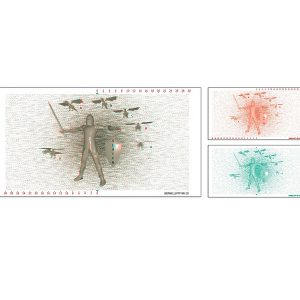
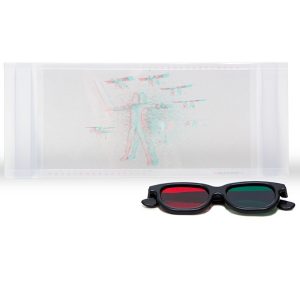 Slayer 3D Variable Tranaglyph. Replaces the popular Topper Vectogram. Size: 10.5" x 5.5" Material: Red/Green slides on transparent vinyl Usage: Can be used with Dual Polachrome Trainer or other slide holders.
Slayer 3D Variable Tranaglyph. Replaces the popular Topper Vectogram. Size: 10.5" x 5.5" Material: Red/Green slides on transparent vinyl Usage: Can be used with Dual Polachrome Trainer or other slide holders. -
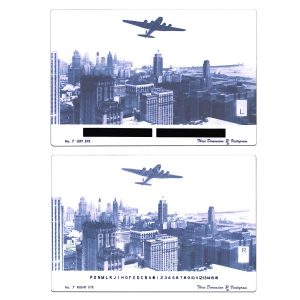 8-1/4" x 5-1/2" Polarized vectograms ensure testing and training at actual distances. vectograms stabalize fusion and steropsis, eliminate suppression and develop simultaneous vision. Used in monocular, binocular, pursuit and saccadic training, vectograms help correct and prevent anomalies involving projection and hand-eye coordination. Ideal for use with Bernell's Dual Polachrome™ Trainer.
8-1/4" x 5-1/2" Polarized vectograms ensure testing and training at actual distances. vectograms stabalize fusion and steropsis, eliminate suppression and develop simultaneous vision. Used in monocular, binocular, pursuit and saccadic training, vectograms help correct and prevent anomalies involving projection and hand-eye coordination. Ideal for use with Bernell's Dual Polachrome™ Trainer. -
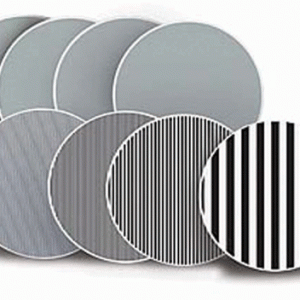 This test can be used with infants, children and adults with low cognitive abilities when communication difficulties prohibit the use of optotype tests to measure visual acuity. This test measures an individual's ability to detect the presence of parallel lines of decreasing width to provide information about the function of some parts of visual pathways. Item #: GF1300
This test can be used with infants, children and adults with low cognitive abilities when communication difficulties prohibit the use of optotype tests to measure visual acuity. This test measures an individual's ability to detect the presence of parallel lines of decreasing width to provide information about the function of some parts of visual pathways. Item #: GF1300 -
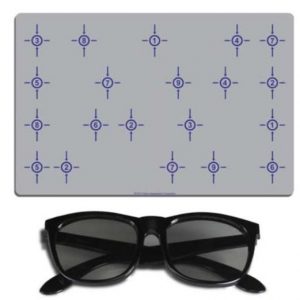
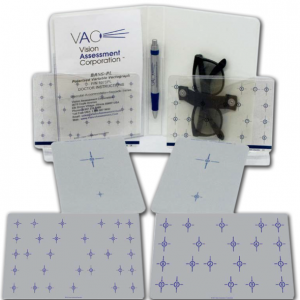 The BASS-PL series is a highly sensitive measure of the relationship between Binocular alignment (fixation disparity) and Accommodative function (clarity) during a Series (stamina) of cognitively loaded Saccadic eye movement. This series is designed to be a more dynamic measure of binocular/accommodative function during a saccadic eye movement task by involving a sequence of saccadic indentification targets at two acuity levels; 20/100 & 20/63. Complete system includes: therapy binder and pen, pair of polarized viewers, instruction manual, set of 20/100 target and vectographs and a set of 20/63 target and vectographs. Item #: BASSPL+
The BASS-PL series is a highly sensitive measure of the relationship between Binocular alignment (fixation disparity) and Accommodative function (clarity) during a Series (stamina) of cognitively loaded Saccadic eye movement. This series is designed to be a more dynamic measure of binocular/accommodative function during a saccadic eye movement task by involving a sequence of saccadic indentification targets at two acuity levels; 20/100 & 20/63. Complete system includes: therapy binder and pen, pair of polarized viewers, instruction manual, set of 20/100 target and vectographs and a set of 20/63 target and vectographs. Item #: BASSPL+ -
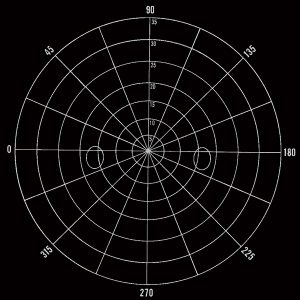 Made of the finest quality black felt. Attached one meter ribbon and occluder establishes the test distance. No need for headrest or chinrest. Double hanging rod model insures flatness. Approximate Size: 49" x 52" Includes: Recording Charts, Wand, and Eight Velcro Dot Targets *Note: Tangent Screen image is a simulated design. Product has black stitching that matches the design of the white target shown. It is up to the practitioner to make their own design. Item #: BC400+
Made of the finest quality black felt. Attached one meter ribbon and occluder establishes the test distance. No need for headrest or chinrest. Double hanging rod model insures flatness. Approximate Size: 49" x 52" Includes: Recording Charts, Wand, and Eight Velcro Dot Targets *Note: Tangent Screen image is a simulated design. Product has black stitching that matches the design of the white target shown. It is up to the practitioner to make their own design. Item #: BC400+ -
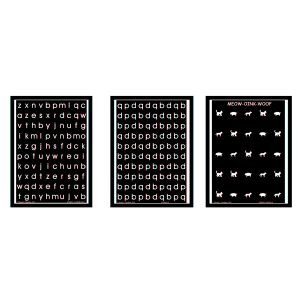 Upgrade your vision therapy to a whole new level with the Stereo Vision Chart Series. Patients love stereo targets, but often we cannot send them home...until now! With the Stereo Vision Chart Series, you have access to economical and efficient training tools to integrate binocular vision training while training other visual skills simultaneously. The Stereo Vision Charts provide an excellent fusion lock and a wonderful depth of field. The depth is subtle and great for working with just noticeable differences (JNDs). They are great for working with pilots, athletes and others who want to refine their depth perception awareness.
Upgrade your vision therapy to a whole new level with the Stereo Vision Chart Series. Patients love stereo targets, but often we cannot send them home...until now! With the Stereo Vision Chart Series, you have access to economical and efficient training tools to integrate binocular vision training while training other visual skills simultaneously. The Stereo Vision Charts provide an excellent fusion lock and a wonderful depth of field. The depth is subtle and great for working with just noticeable differences (JNDs). They are great for working with pilots, athletes and others who want to refine their depth perception awareness. -
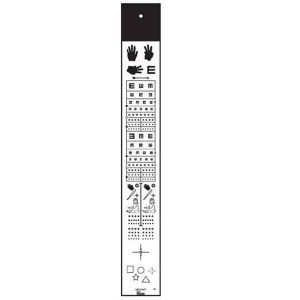 Child Vectorgraphic Projector Slide → Training Demonstration → Tumbling E Monocular 20/100 – 20/15 (9 Lines) → Acuity Balance 20/30 – 20/20 (3 Lines) → Tumbling E Binocular 20/30 – 20/15 (4 Lines) → Fixation Disparity with Fusion Lock → Stereopsis 215 - 40 seconds of arc
Child Vectorgraphic Projector Slide → Training Demonstration → Tumbling E Monocular 20/100 – 20/15 (9 Lines) → Acuity Balance 20/30 – 20/20 (3 Lines) → Tumbling E Binocular 20/30 – 20/15 (4 Lines) → Fixation Disparity with Fusion Lock → Stereopsis 215 - 40 seconds of arc

